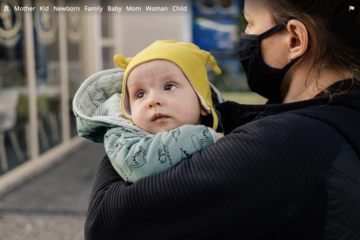We found 68 results that contain "education system"
Posted on: #iteachmsu

NAVIGATING CONTEXT
Collaborative Discussion
Introduction:
The educator
prepares students for discussion, establishes an environment that welcomes thought, scaffolds discussion where needed, monitors participation, and consolidates thinking.
Collaborative discussion is one of the most effective tools to deepen students’ understanding and engagement with texts. Discussion offers students the opportunity to build arguments and defend them with evidence, consider opposing points of view, elaborate ideas, and build complex webs of knowledge by revealing and furthering thinking. Unfortunately, the amount of time devoted to classroom discussion is measurable in seconds per day (Nystrand 2006), and when discussion does occur, the quality and depth of students’ discourse is often limited (Zwiers & Crawford, 2011).
Though discussion is often considered a student-centric activity, reaping the benefits of discussion requires educators to play an active role in preparing students, creating an environment that welcomes thought, scaffolding discussion when needed, monitoring participation, and consolidating thinking.
The educator
prepares students for discussion, establishes an environment that welcomes thought, scaffolds discussion where needed, monitors participation, and consolidates thinking.
Collaborative discussion is one of the most effective tools to deepen students’ understanding and engagement with texts. Discussion offers students the opportunity to build arguments and defend them with evidence, consider opposing points of view, elaborate ideas, and build complex webs of knowledge by revealing and furthering thinking. Unfortunately, the amount of time devoted to classroom discussion is measurable in seconds per day (Nystrand 2006), and when discussion does occur, the quality and depth of students’ discourse is often limited (Zwiers & Crawford, 2011).
Though discussion is often considered a student-centric activity, reaping the benefits of discussion requires educators to play an active role in preparing students, creating an environment that welcomes thought, scaffolding discussion when needed, monitoring participation, and consolidating thinking.
Posted by:
Chathuri Super admin..

Posted on: #iteachmsu


Collaborative Discussion
Introduction:
The educator
prepares students for discussion, establ...
The educator
prepares students for discussion, establ...
Posted by:
NAVIGATING CONTEXT
Thursday, Jan 14, 2021
Posted on: #iteachmsu

ASSESSING LEARNING
Computer Science
Computer science is the study of computers and computational systems. It is a broad field which includes everything from the algorithms that make up software to how software interacts with hardware to how well software is developed and designed.
Some common job titles for computer scientists include:
Computer Programmer
Information Technology Specialist
Data Scientist
Web Optimization Specialist
Database Administrator
Systems Analyst
Web Developer
https://projects.invisionapp.com/d/main?origin=v7#/console/20294675/474484363/inspect
Some common job titles for computer scientists include:
Computer Programmer
Information Technology Specialist
Data Scientist
Web Optimization Specialist
Database Administrator
Systems Analyst
Web Developer
https://projects.invisionapp.com/d/main?origin=v7#/console/20294675/474484363/inspect
Authored by:
Shweta

Posted on: #iteachmsu


Computer Science
Computer science is the study of computers and computational s...
Authored by:
ASSESSING LEARNING
Thursday, Nov 23, 2023
Posted on: #iteachmsu

ASSESSING LEARNING
Communication to Support Student Learning in a Digital Learning Environment
Key Method
Educator provides evidence of their understanding of communication and outlines and provides evidence of a lesson that uses technology to support students’ use of communication in learning.
Method Components
What are the 4Cs?
The 4Cs for 21st century learning are Creativity, Critical Thinking, Communication, and Collaboration. They are part of the framework for 21st Century Learning and are designed to support student learning in today’s world and are skills they can use in college and career.
What is communication (and what isn’t it)?
The P21 framework emphasizes effective use of oral, written, and nonverbal communication skills for multiple purposes (e.g., to inform, instruct, motivate, persuade, and share ideas). It also focuses on effective listening, using technology to communicate, and being able to evaluate the effectiveness of communication efforts—all within diverse contexts (adapted from P21). Note that working in partners is a great way to collaborate or build shared understanding but a critical part of communication is sharing with an authentic audience.
Educator provides evidence of their understanding of communication and outlines and provides evidence of a lesson that uses technology to support students’ use of communication in learning.
Method Components
What are the 4Cs?
The 4Cs for 21st century learning are Creativity, Critical Thinking, Communication, and Collaboration. They are part of the framework for 21st Century Learning and are designed to support student learning in today’s world and are skills they can use in college and career.
What is communication (and what isn’t it)?
The P21 framework emphasizes effective use of oral, written, and nonverbal communication skills for multiple purposes (e.g., to inform, instruct, motivate, persuade, and share ideas). It also focuses on effective listening, using technology to communicate, and being able to evaluate the effectiveness of communication efforts—all within diverse contexts (adapted from P21). Note that working in partners is a great way to collaborate or build shared understanding but a critical part of communication is sharing with an authentic audience.
Authored by:
Greg

Posted on: #iteachmsu


Communication to Support Student Learning in a Digital Learning Environment
Key Method
Educator provides evidence of their understanding of com...
Educator provides evidence of their understanding of com...
Authored by:
ASSESSING LEARNING
Thursday, Dec 31, 2020
Posted on: #iteachmsu

NAVIGATING CONTEXT
Embedding Habits, Skills, and Disposition in PAs
Competency Info
The Advanced Performance Assessment for Learning
Design stack is designed so that, if all three credentials are taken together, they will become more than the sum of their parts. Each micro-credential is intended to be able to stand on its own; however, the ideas and activities of each of these credentials support and expand on the others, allowing a fuller appreciation of performance assessment and its implications. Even more value will be gained by engaging in all three Performance Assessment for Learning stacks together.
Habits, Skills, and Dispositions:
Habits, Skills, and Dispositions are those qualities that—in addition to academic knowledge - are necessary for success in college, career, and civic life. Examples include collaboration, creativity, communication, and self-direction, among others. Increasingly, these habits, skills, and dispositions are seen as essential for the success of students in college, career, and civic life (for more, see the infographic in the resources). They are referred to in the field by a number of names, including essential skills and dispositions, work-study habits, non-cognitive skills, etc.
Performance assessments that measure habits, skills, and dispositions provide students with feedback on how well developed these essential skills are and how they might improve performance.
The Advanced Performance Assessment for Learning
Design stack is designed so that, if all three credentials are taken together, they will become more than the sum of their parts. Each micro-credential is intended to be able to stand on its own; however, the ideas and activities of each of these credentials support and expand on the others, allowing a fuller appreciation of performance assessment and its implications. Even more value will be gained by engaging in all three Performance Assessment for Learning stacks together.
Habits, Skills, and Dispositions:
Habits, Skills, and Dispositions are those qualities that—in addition to academic knowledge - are necessary for success in college, career, and civic life. Examples include collaboration, creativity, communication, and self-direction, among others. Increasingly, these habits, skills, and dispositions are seen as essential for the success of students in college, career, and civic life (for more, see the infographic in the resources). They are referred to in the field by a number of names, including essential skills and dispositions, work-study habits, non-cognitive skills, etc.
Performance assessments that measure habits, skills, and dispositions provide students with feedback on how well developed these essential skills are and how they might improve performance.
Authored by:
Center for Collaborative Education

Posted on: #iteachmsu


Embedding Habits, Skills, and Disposition in PAs
Competency Info
The Advanced Performance Assessment for Learning
D...
The Advanced Performance Assessment for Learning
D...
Authored by:
NAVIGATING CONTEXT
Friday, Jan 8, 2021
Posted on: #iteachmsu

The Role of Nonclassroom Spaces in Living-Learning ... - ERIC
The coronavirus pandemic continues to hit the US economy, with another 5.2 million Amercians seeking unemployment benefits last week.
More than 20 million Americans have applied for benefits in the last month.
Economists believe that the U.S. economy contracted at its sharpest rate since World War II in the first quarter of the year.
Another 5.2 million more Americans sought unemployment benefits last week, lifting total filings for claims over the past month above an astounding 20 million, which would underscore the deepening economic slump caused by the novel coronavirus outbreak.
More than 20 million Americans have applied for benefits in the last month.
Economists believe that the U.S. economy contracted at its sharpest rate since World War II in the first quarter of the year.
Another 5.2 million more Americans sought unemployment benefits last week, lifting total filings for claims over the past month above an astounding 20 million, which would underscore the deepening economic slump caused by the novel coronavirus outbreak.
Posted by:
Chathuri Hewapathirana

Posted on: #iteachmsu

DISCIPLINARY CONTENT
Factors for good health
Regular exercise, balanced nutrition, and adequate rest all contribute to good health. People receive medical treatment to maintain the balance, when necessary. Physical well-being involves pursuing a healthful lifestyle to decrease the risk of disease.
Good health depends on a wide range of factors.
Genetic factors
A person is born with a variety of genes. In some people, an unusual genetic pattern or change can lead to a less-than-optimum level of health. People may inherit genes from their parents that increase their risk for certain health conditions.
Environmental factors
Environmental factors play a role in health. Sometimes, the environment alone is enough to impact health. Other times, an environmental trigger can cause illness in a person who has an increased genetic risk of a particular disease.
Access to healthcare plays a role, but the WHO suggests that the following factors may have a more significant impact on health than this:
where a person lives
the state of the surrounding environment
genetics
their income
their level of education
employment status
It is possible to categorize these as follows:
The social and economic environment: This may include the financial status of a family or community, as well as the social culture and quality of relationships.
The physical environment: This includes which germs exist in an area, as well as pollution levels.
A person’s characteristics and behaviors: A person’s genetic makeup and lifestyle choices can affect their overall health.
Good health depends on a wide range of factors.
Genetic factors
A person is born with a variety of genes. In some people, an unusual genetic pattern or change can lead to a less-than-optimum level of health. People may inherit genes from their parents that increase their risk for certain health conditions.
Environmental factors
Environmental factors play a role in health. Sometimes, the environment alone is enough to impact health. Other times, an environmental trigger can cause illness in a person who has an increased genetic risk of a particular disease.
Access to healthcare plays a role, but the WHO suggests that the following factors may have a more significant impact on health than this:
where a person lives
the state of the surrounding environment
genetics
their income
their level of education
employment status
It is possible to categorize these as follows:
The social and economic environment: This may include the financial status of a family or community, as well as the social culture and quality of relationships.
The physical environment: This includes which germs exist in an area, as well as pollution levels.
A person’s characteristics and behaviors: A person’s genetic makeup and lifestyle choices can affect their overall health.
Posted by:
Rupali Jagtap
Posted on: #iteachmsu

Factors for good health
Regular exercise, balanced nutrition, and adequate rest all contrib...
Posted by:
DISCIPLINARY CONTENT
Thursday, Dec 31, 2020
Posted on: #iteachmsu

DISCIPLINARY CONTENT
Timing and Scheduling Accommodations
Descriptions:
The educator identifies one timing and scheduling accommodation for a student with a disability based on his or her individual learning strengths and needs and the barrier created by the disability.
Introduction
The educator uses a set of guiding questions to identify one timing and scheduling accommodation for a student with a disability based on his or her individual learning strengths and needs and the barrier created by the disability. The educator then implements the accommodation and evaluates its effectiveness.
Key Method Components
This micro-credential, one of four in the Accommodations stack, addresses timing and scheduling accommodations. These micro-credentials are consistent with the Individuals with Disabilities Education Improvement Act (IDEA) requirements, and are therefore relevant to students in grades K-12 with disabilities.
Educators should understand that students with disabilities often encounter barriers when they access the general education curriculum. The Every Student Succeeds Act (ESSA) and the Individuals with Disabilities Education Improvement Act (IDEA) require that educators provide appropriate accommodations to students with disabilities to address these barriers. Careful consideration of a student’s strengths and needs can help guide the identification and selection of an accommodation that is likely to benefit a student.
The educator identifies one timing and scheduling accommodation for a student with a disability based on his or her individual learning strengths and needs and the barrier created by the disability.
Introduction
The educator uses a set of guiding questions to identify one timing and scheduling accommodation for a student with a disability based on his or her individual learning strengths and needs and the barrier created by the disability. The educator then implements the accommodation and evaluates its effectiveness.
Key Method Components
This micro-credential, one of four in the Accommodations stack, addresses timing and scheduling accommodations. These micro-credentials are consistent with the Individuals with Disabilities Education Improvement Act (IDEA) requirements, and are therefore relevant to students in grades K-12 with disabilities.
Educators should understand that students with disabilities often encounter barriers when they access the general education curriculum. The Every Student Succeeds Act (ESSA) and the Individuals with Disabilities Education Improvement Act (IDEA) require that educators provide appropriate accommodations to students with disabilities to address these barriers. Careful consideration of a student’s strengths and needs can help guide the identification and selection of an accommodation that is likely to benefit a student.
Posted by:
Chathuri Hewapathirana

Posted on: #iteachmsu


Timing and Scheduling Accommodations
Descriptions:
The educator identifies one timing and schedul...
The educator identifies one timing and schedul...
Posted by:
DISCIPLINARY CONTENT
Monday, Sep 14, 2020
Posted on: #iteachmsu

ASSESSING LEARNING
ABOUT
Teaching Commons: “an emergent conceptual space for exchange and communityamong faculty, students, and all others committed to learning as an essential activity of life in contemporary democratic society”(Huber and Hutchings, 2005, p.1)
What Is the #iteachmsu Commons? You teach MSU. We, the Academic Advancement Network, The Graduate School, and The Hub for Innovation in Learning and Technology, believe that a wide educator community (faculty, TAs, ULAs, instructional designers, academic advisors, et al.) makes learning happen across MSU. But, on such a large campus, it can be difficult to fully recognize and leverage this community’s teaching and learning innovations. To address this challenge, the #iteachmsu Commons provides an educator-driven space for sharing teaching resources, connecting across educator networks, and growing teaching practice.#iteachmsu Commons content may be discipline-specific or transdisciplinary, but will always be anchored in teaching competency areas. You will find blog posts, curated playlists, educator learning module pathways, and a campus-wide teaching and learning events calendar. We cultivate this commons across spaces. And through your engagement, we will continue to nurture a culture of teaching and learning across MSU and beyond.
How Do I Contribute to the #iteachmsu Commons? Content is organized by posts, playlists and pathways.Posts: Posts are shorter or longer-form blog postings about teaching practice(s), questions for the educator community, and/or upcoming teaching and learning events. With an MSU email address and free account signup, educators can immediately contribute blog posts and connected media (e.g. handouts, slide decks, class activity prompts, promotional materials). All educators at MSU are welcome to use and contribute to #iteachmsu. And there are no traditional editorial calendars. Suggested models of posts can be found here.Playlists: Playlists are groupings of posts curated by individual educators and the #iteachmsu community. Playlists allow individual educators to tailor their development and community experiences based on teaching competency area, interest, and/or discipline.Pathways: Pathways are groupings of educator learning modules curated by academic and support units for badges and other credentialing.
There are two ways to add your contribution to the space:Contribute existing local resources for posts and pathways: Your unit, college, and/or department might already have educator development resources that could be of use to the wider MSU teaching and learning community. These could be existing blog posts on teaching practice, teaching webinars, and/or open educational resources (e.g classroom assessments, activities). This content will make up part of the posts, playlists, and pathways on this site. Educators can then curate these posts into playlists based on their individual interests. Please make sure to have permission to share this content on a central MSU web space.Contribute new content for posts: A strength of the #iteachmsu Commons is that it immediately allows educators to share teaching resources, questions and events through posts to the entire community. Posts can take a variety of forms and are organized by teaching competency area categories, content tags, date, and popularity. Posts can be submitted by both individual educators and central units for immediate posting but must adhere to #iteachmsu Commons community guidelines.Posts could be:About your teaching practice(s): You discuss and/or reflect on the practices you’re using in your teaching. In addition to talking about your ideas, successes, and challenges, we hope you also provide the teaching materials you used (sharing the assignment, slidedeck, rubric, etc.)Responses to teaching ideas across the web or social media: You share your thoughts about teaching ideas they engage with from other media across the web (e.g. blog posts, social media posts, etc.).Cross-posts from other teaching-related blogs that might be useful for the #iteachmsu community: You cross-post content from other teaching-related blogs they feel might be useful to the #iteachmsu community.About teaching-related events: You share upcoming teaching related events as well as their thoughts about ideas they engage with events at MSU and beyond (e.g. workshops, conferences, etc.). If these events help you think in new ways about your practice, share them with the #iteachmsu community.Questions for our community: You pose questions via posts to the larger community to get ideas for their practice and connect with others considering similar questions.What Are the #iteachmsu Commons Policies?Part of the mission of the #iteachmsu Commons is to provide space for sharing, reflecting, and learning for all educators on our campus wherever they are in their teaching development. The commons is designed to encourage these types of interactions and reflect policies outlined by the MSU Faculty Senate. We maintain the right to remove any post that violates guidelines as outlined here and by MSU. To maintain a useful and safer commons, we ask that you:Follow the MSU Guidelines for Social Media.Engage across the #iteachmsu commons in a civil and respectful manner. Content may be moderated in accordance with the MSU Guidelines for Social Media.Do not share private or confidential information via shared content on the #iteachmsu Commons.Content posted on the #iteachmsu Commons is licensed under a Creative Commons Attribution-NonCommercial-ShareAlike 4.0 International license. Learn more about this licensing here. Posted comments, images, etc. on the #iteachmsu Commons do not necessarily represent the views of Michigan State University or the #iteachmsu Commons Team. Links to external, non-#iteachmsu Commons content do not constitute official endorsement by, or necessarily represent the views of, the #iteachmsu Commons or Michigan State University.What if I Have #iteachmsu Commons Questions and/or Feedback?If you have any concerns about #iteachmsu Commons content, please email us at iteach@msu.edu. We welcome all feedback and thank you for your help in promoting a safer, vibrant and respectful community.
What Is the #iteachmsu Commons? You teach MSU. We, the Academic Advancement Network, The Graduate School, and The Hub for Innovation in Learning and Technology, believe that a wide educator community (faculty, TAs, ULAs, instructional designers, academic advisors, et al.) makes learning happen across MSU. But, on such a large campus, it can be difficult to fully recognize and leverage this community’s teaching and learning innovations. To address this challenge, the #iteachmsu Commons provides an educator-driven space for sharing teaching resources, connecting across educator networks, and growing teaching practice.#iteachmsu Commons content may be discipline-specific or transdisciplinary, but will always be anchored in teaching competency areas. You will find blog posts, curated playlists, educator learning module pathways, and a campus-wide teaching and learning events calendar. We cultivate this commons across spaces. And through your engagement, we will continue to nurture a culture of teaching and learning across MSU and beyond.
How Do I Contribute to the #iteachmsu Commons? Content is organized by posts, playlists and pathways.Posts: Posts are shorter or longer-form blog postings about teaching practice(s), questions for the educator community, and/or upcoming teaching and learning events. With an MSU email address and free account signup, educators can immediately contribute blog posts and connected media (e.g. handouts, slide decks, class activity prompts, promotional materials). All educators at MSU are welcome to use and contribute to #iteachmsu. And there are no traditional editorial calendars. Suggested models of posts can be found here.Playlists: Playlists are groupings of posts curated by individual educators and the #iteachmsu community. Playlists allow individual educators to tailor their development and community experiences based on teaching competency area, interest, and/or discipline.Pathways: Pathways are groupings of educator learning modules curated by academic and support units for badges and other credentialing.
There are two ways to add your contribution to the space:Contribute existing local resources for posts and pathways: Your unit, college, and/or department might already have educator development resources that could be of use to the wider MSU teaching and learning community. These could be existing blog posts on teaching practice, teaching webinars, and/or open educational resources (e.g classroom assessments, activities). This content will make up part of the posts, playlists, and pathways on this site. Educators can then curate these posts into playlists based on their individual interests. Please make sure to have permission to share this content on a central MSU web space.Contribute new content for posts: A strength of the #iteachmsu Commons is that it immediately allows educators to share teaching resources, questions and events through posts to the entire community. Posts can take a variety of forms and are organized by teaching competency area categories, content tags, date, and popularity. Posts can be submitted by both individual educators and central units for immediate posting but must adhere to #iteachmsu Commons community guidelines.Posts could be:About your teaching practice(s): You discuss and/or reflect on the practices you’re using in your teaching. In addition to talking about your ideas, successes, and challenges, we hope you also provide the teaching materials you used (sharing the assignment, slidedeck, rubric, etc.)Responses to teaching ideas across the web or social media: You share your thoughts about teaching ideas they engage with from other media across the web (e.g. blog posts, social media posts, etc.).Cross-posts from other teaching-related blogs that might be useful for the #iteachmsu community: You cross-post content from other teaching-related blogs they feel might be useful to the #iteachmsu community.About teaching-related events: You share upcoming teaching related events as well as their thoughts about ideas they engage with events at MSU and beyond (e.g. workshops, conferences, etc.). If these events help you think in new ways about your practice, share them with the #iteachmsu community.Questions for our community: You pose questions via posts to the larger community to get ideas for their practice and connect with others considering similar questions.What Are the #iteachmsu Commons Policies?Part of the mission of the #iteachmsu Commons is to provide space for sharing, reflecting, and learning for all educators on our campus wherever they are in their teaching development. The commons is designed to encourage these types of interactions and reflect policies outlined by the MSU Faculty Senate. We maintain the right to remove any post that violates guidelines as outlined here and by MSU. To maintain a useful and safer commons, we ask that you:Follow the MSU Guidelines for Social Media.Engage across the #iteachmsu commons in a civil and respectful manner. Content may be moderated in accordance with the MSU Guidelines for Social Media.Do not share private or confidential information via shared content on the #iteachmsu Commons.Content posted on the #iteachmsu Commons is licensed under a Creative Commons Attribution-NonCommercial-ShareAlike 4.0 International license. Learn more about this licensing here. Posted comments, images, etc. on the #iteachmsu Commons do not necessarily represent the views of Michigan State University or the #iteachmsu Commons Team. Links to external, non-#iteachmsu Commons content do not constitute official endorsement by, or necessarily represent the views of, the #iteachmsu Commons or Michigan State University.What if I Have #iteachmsu Commons Questions and/or Feedback?If you have any concerns about #iteachmsu Commons content, please email us at iteach@msu.edu. We welcome all feedback and thank you for your help in promoting a safer, vibrant and respectful community.
Posted by:
Chathuri Super admin..
Posted on: #iteachmsu

ABOUT
Teaching Commons: “an emergent conceptual space for exchange and co...
Posted by:
ASSESSING LEARNING
Wednesday, Oct 2, 2019

